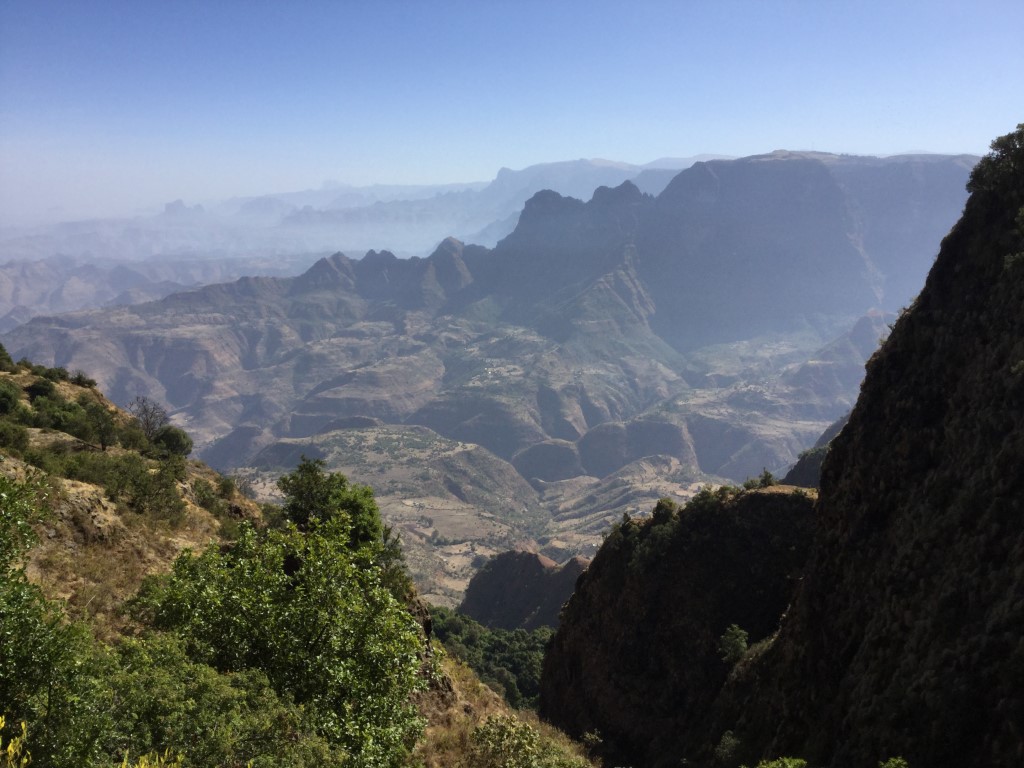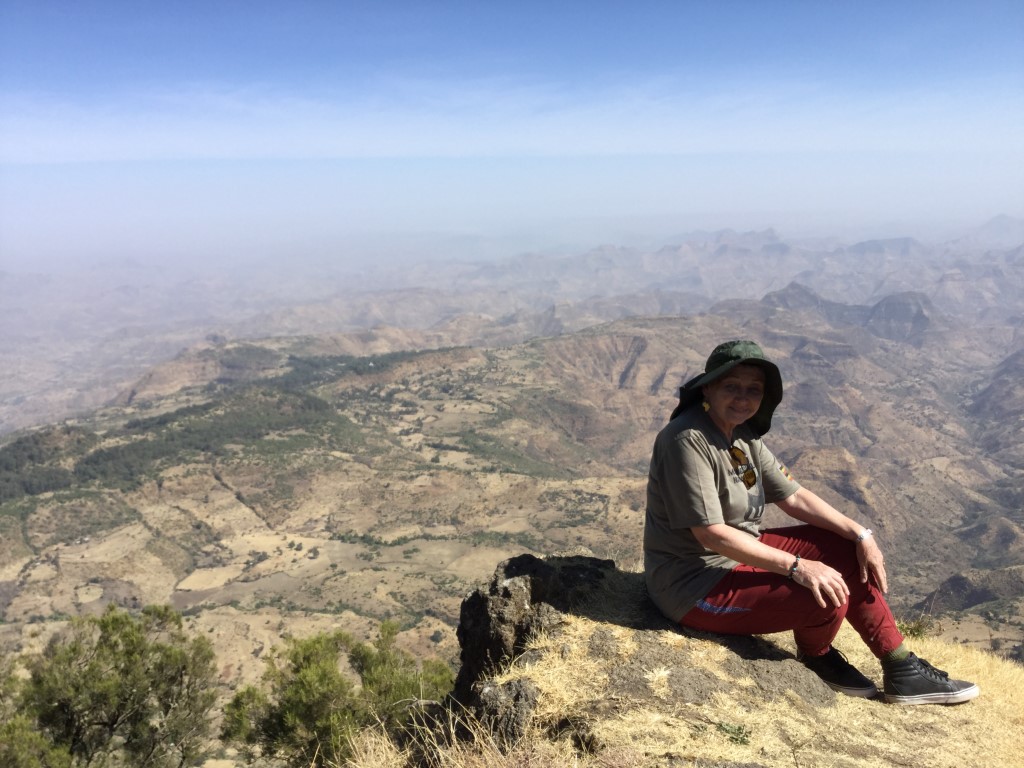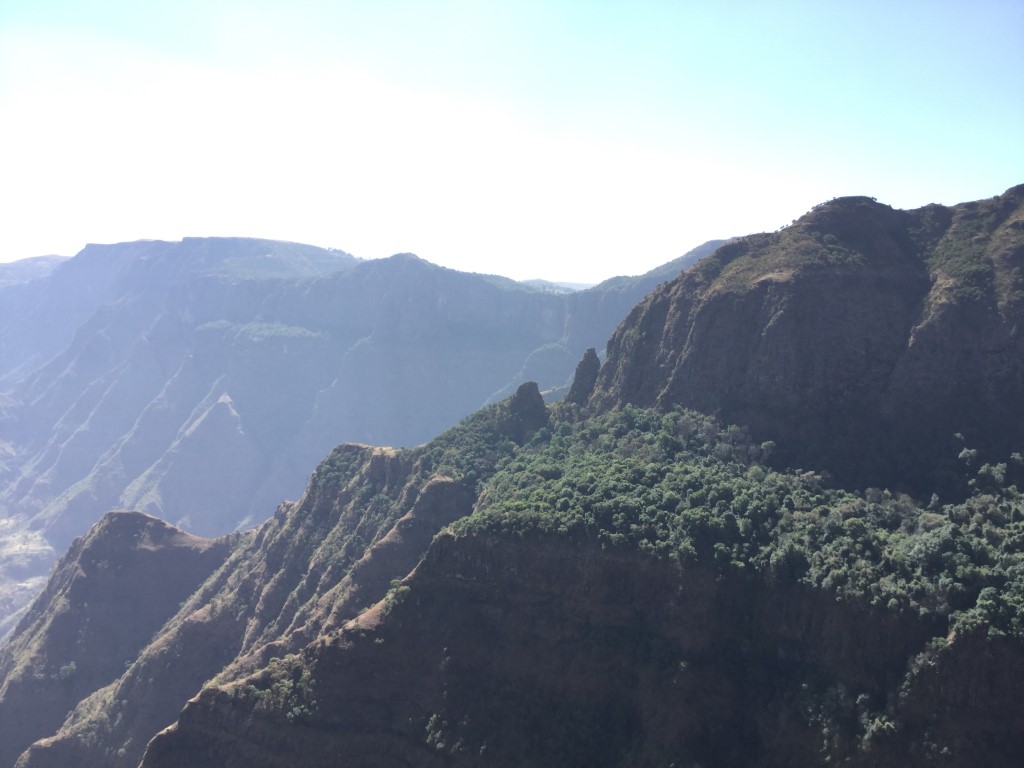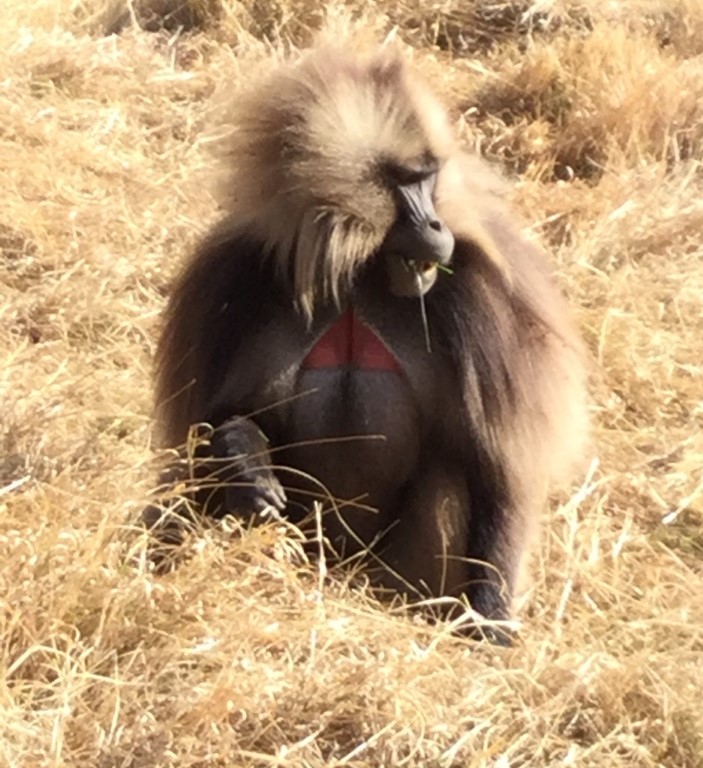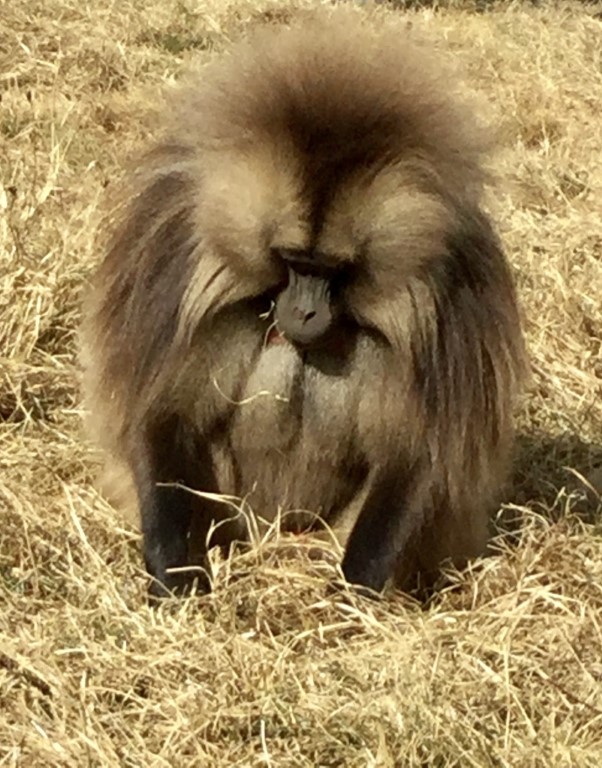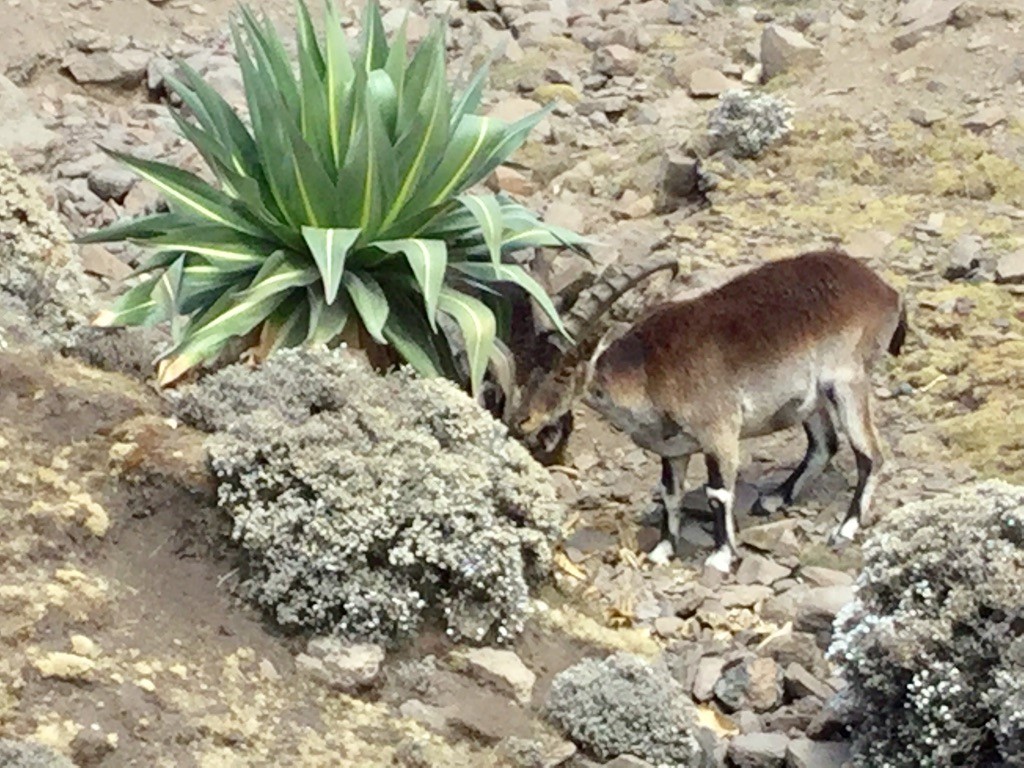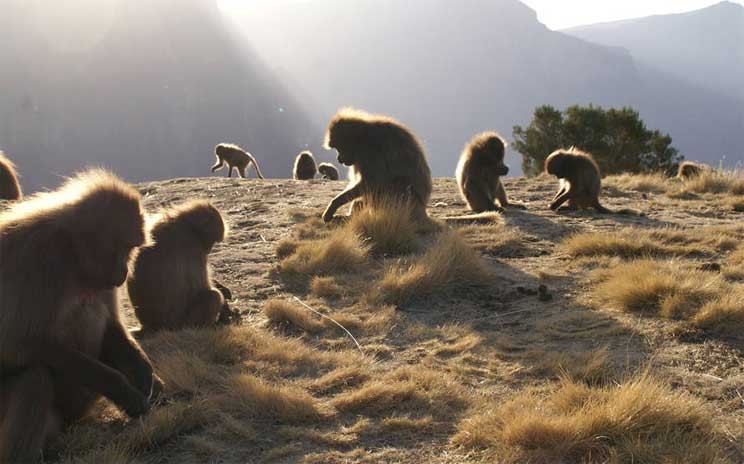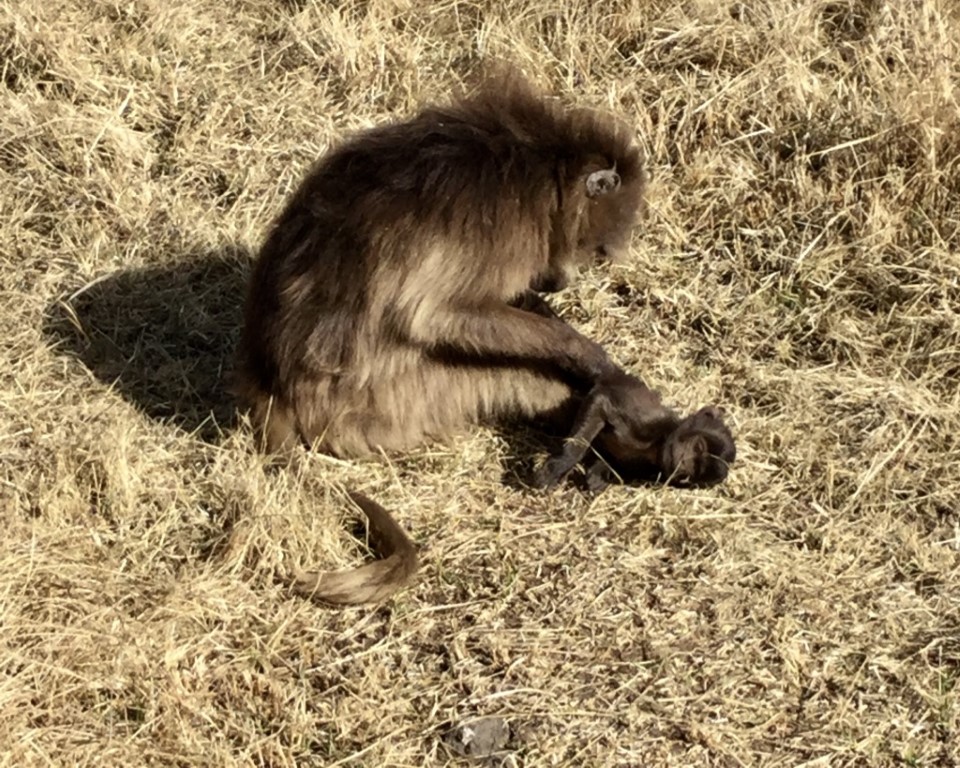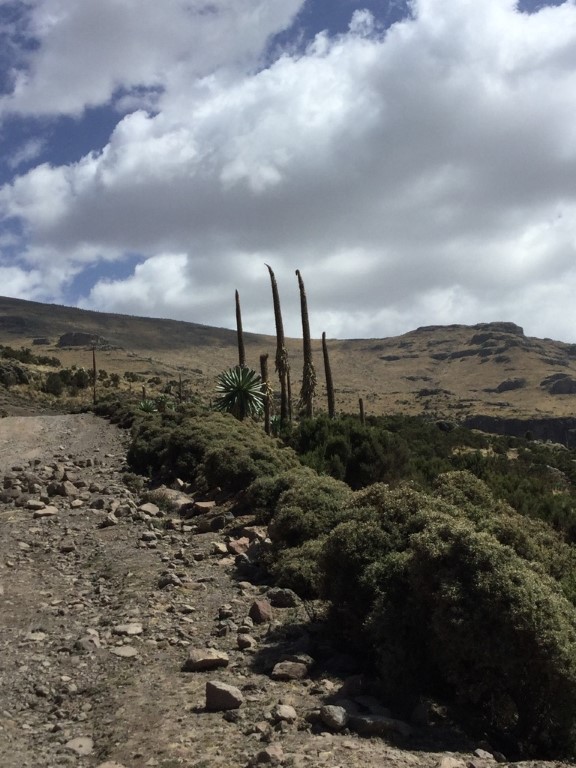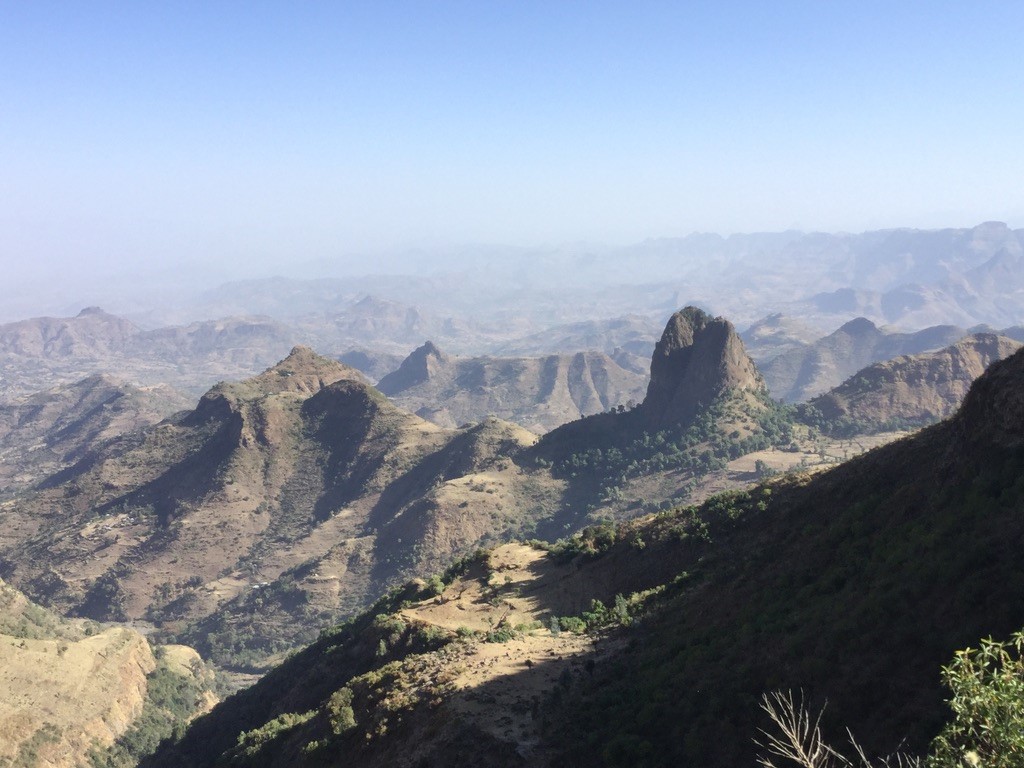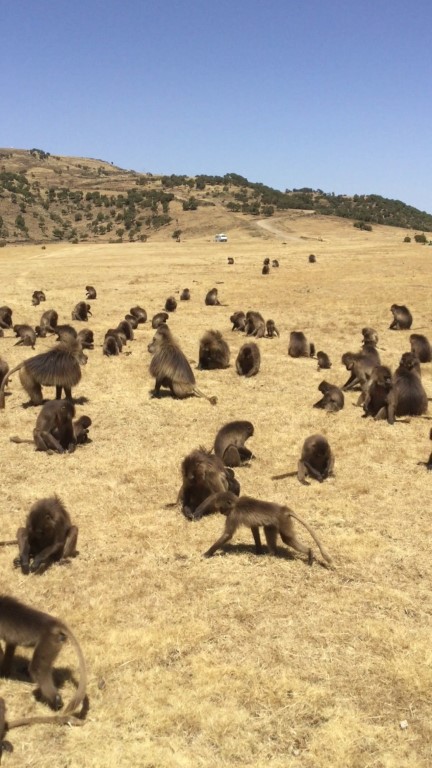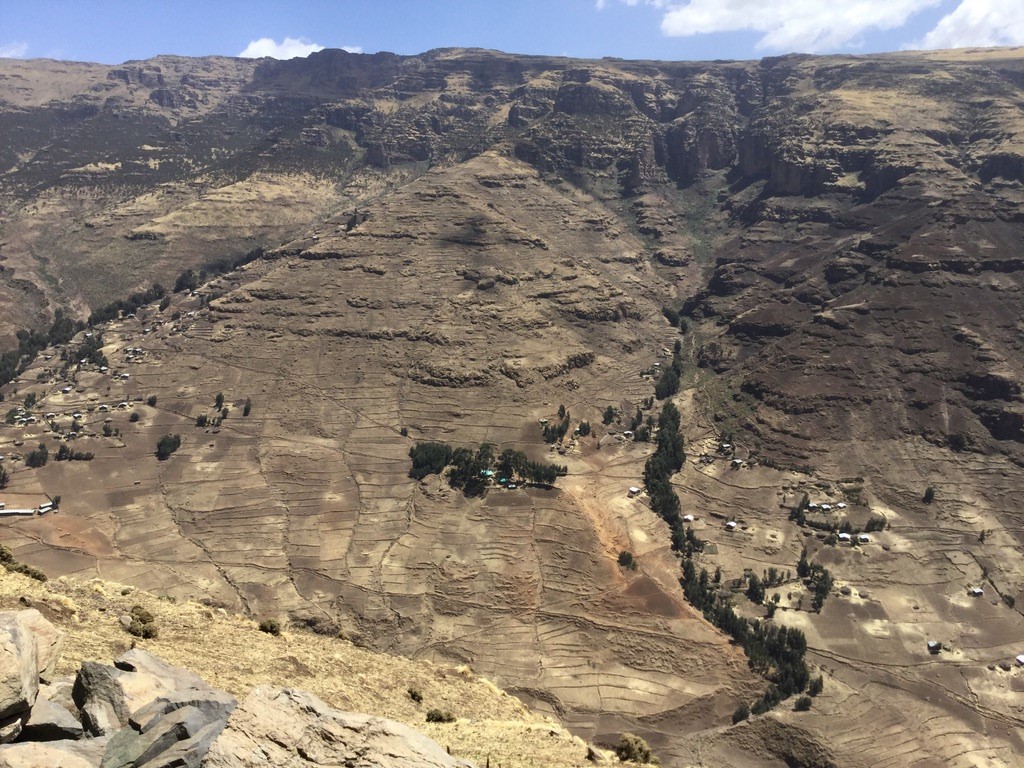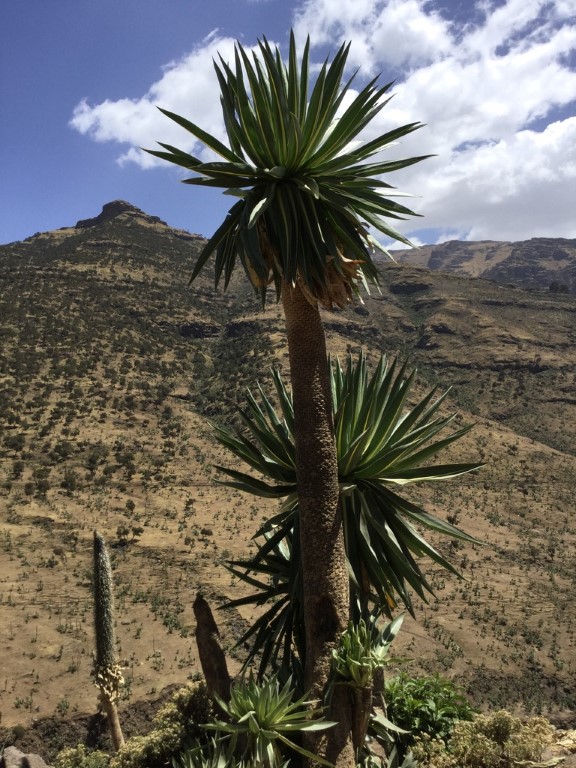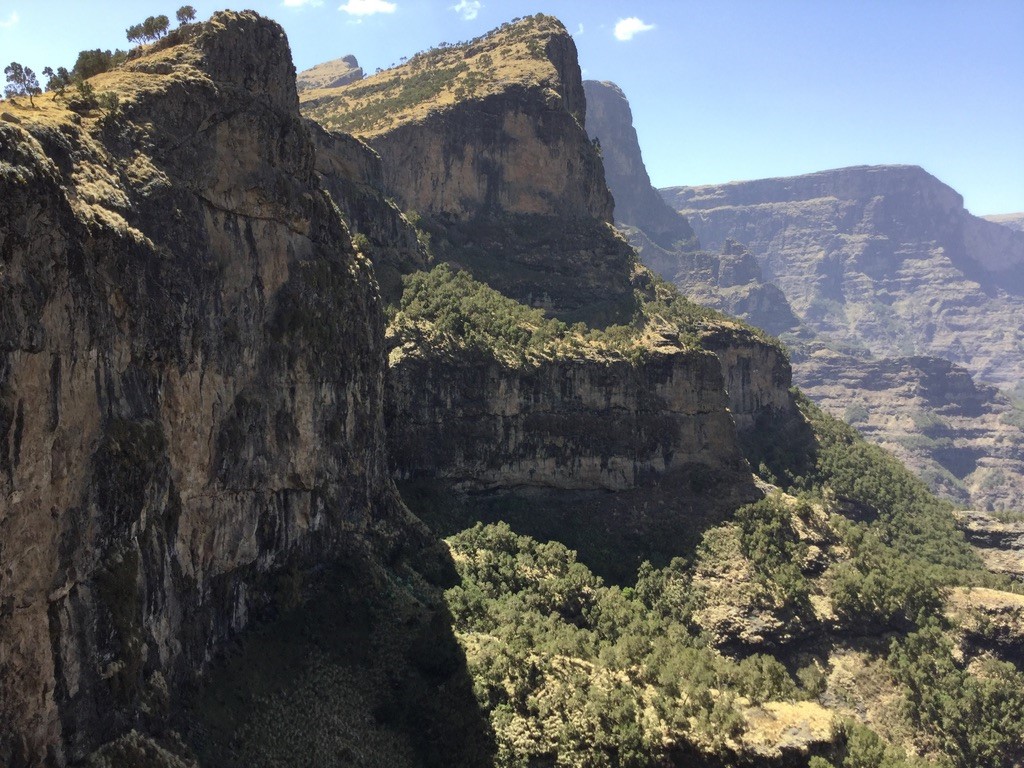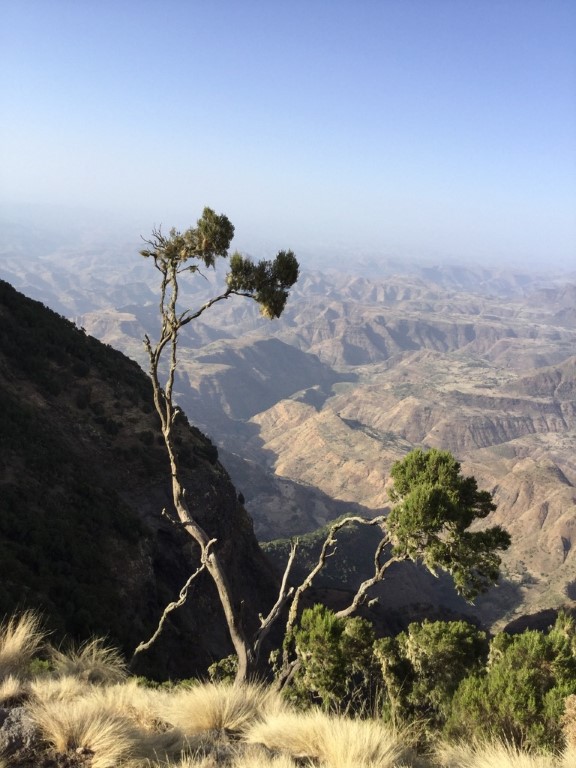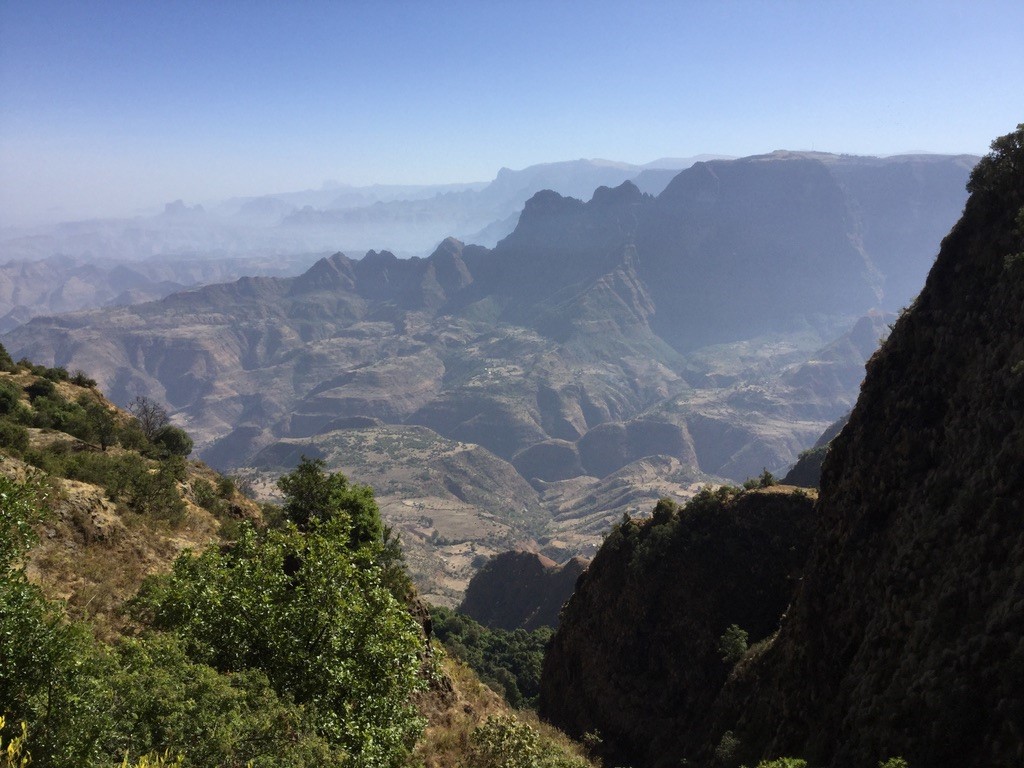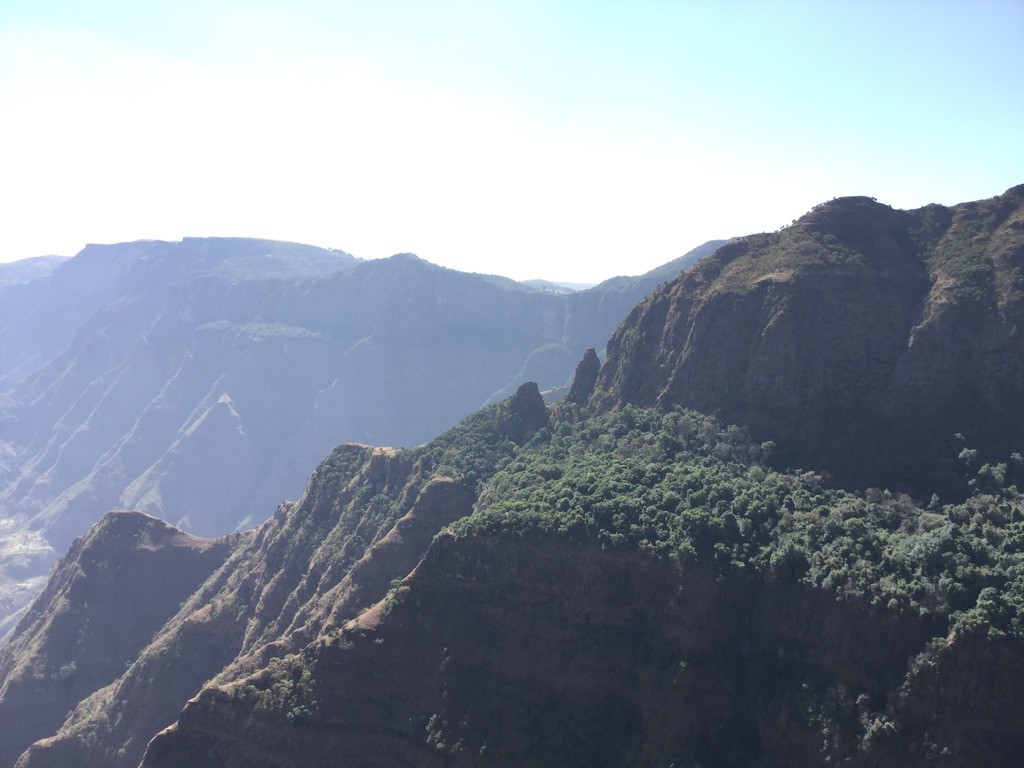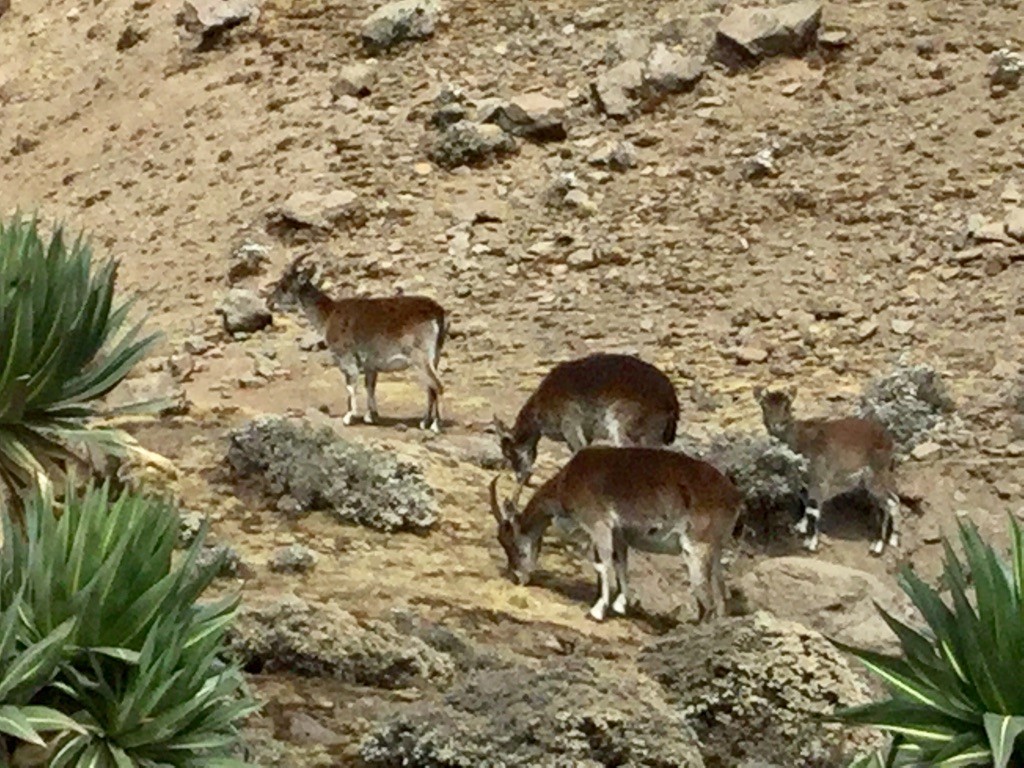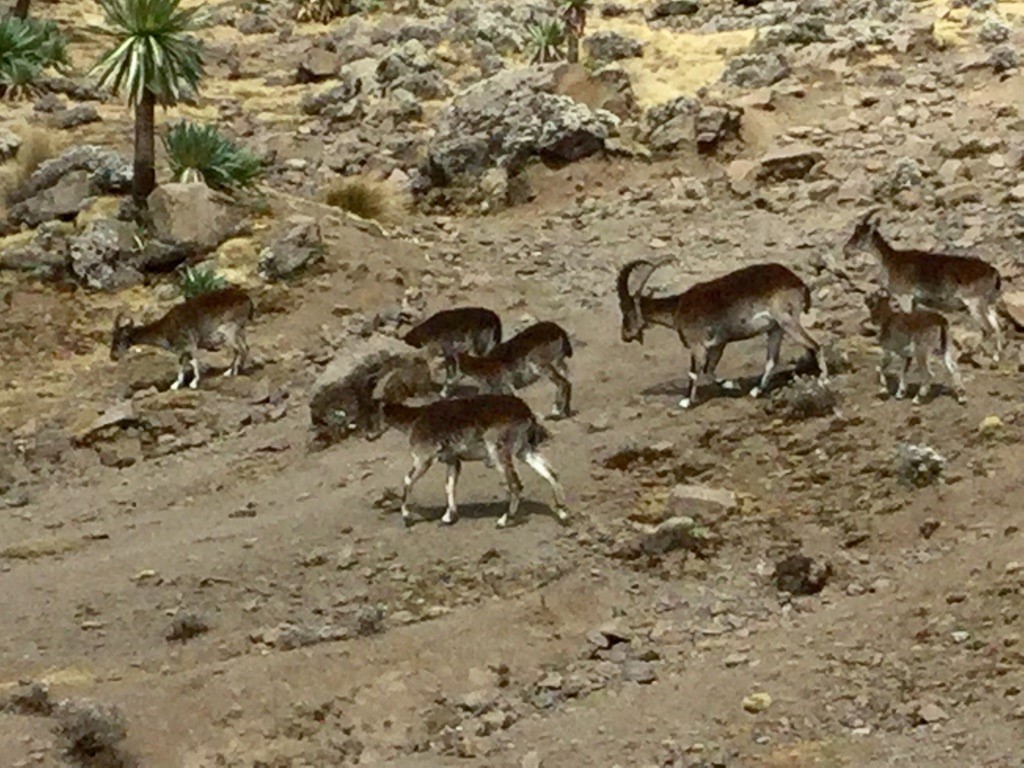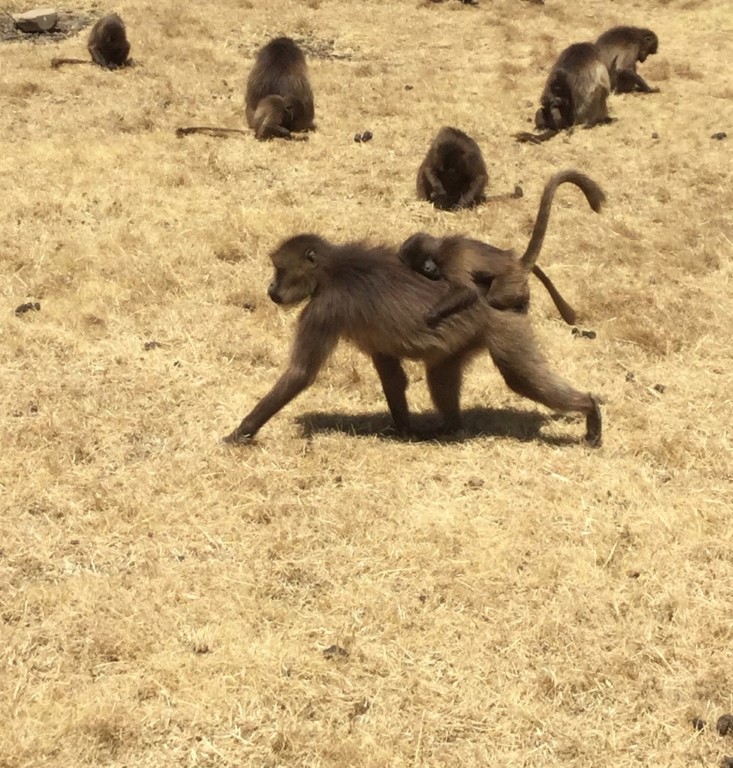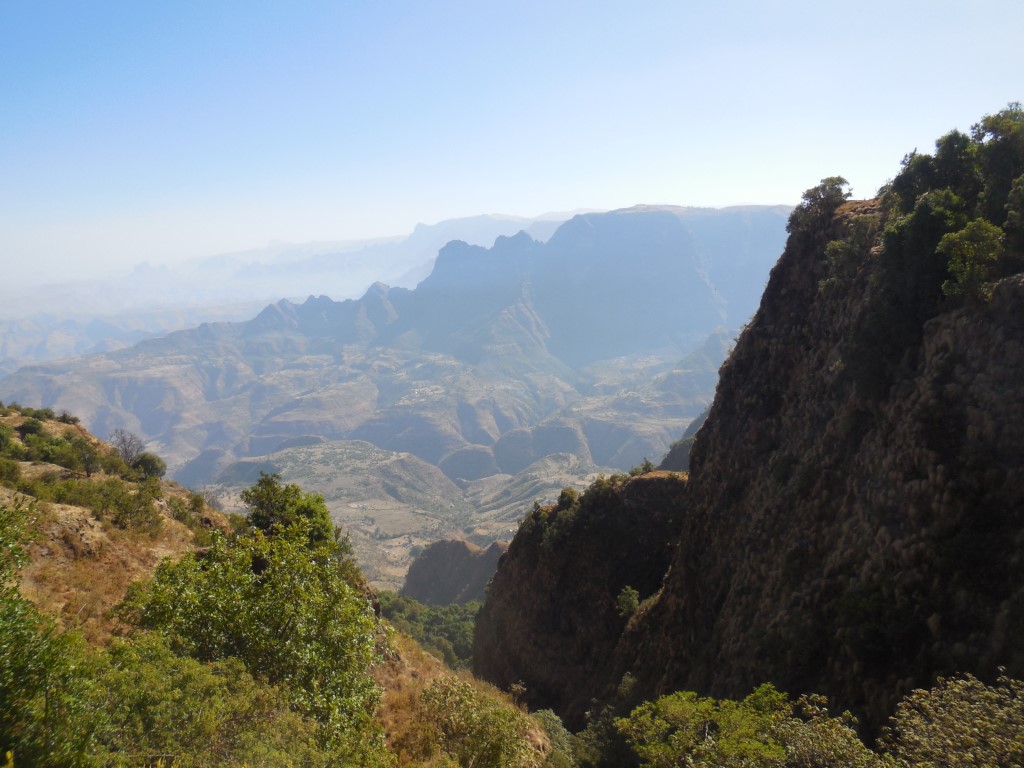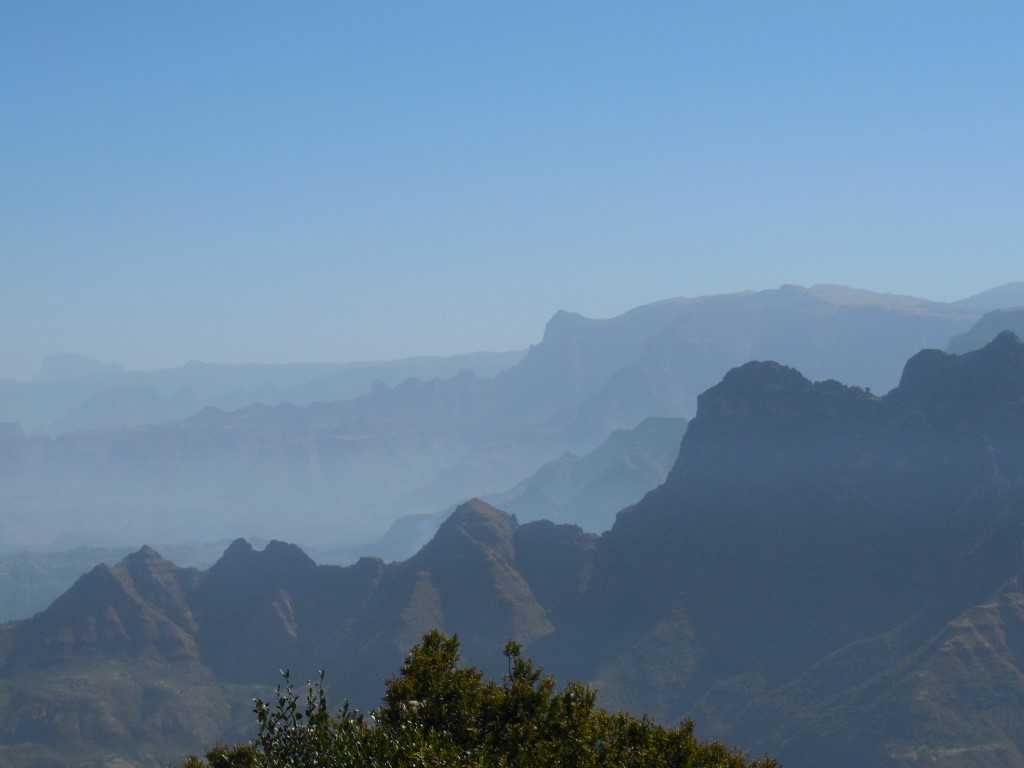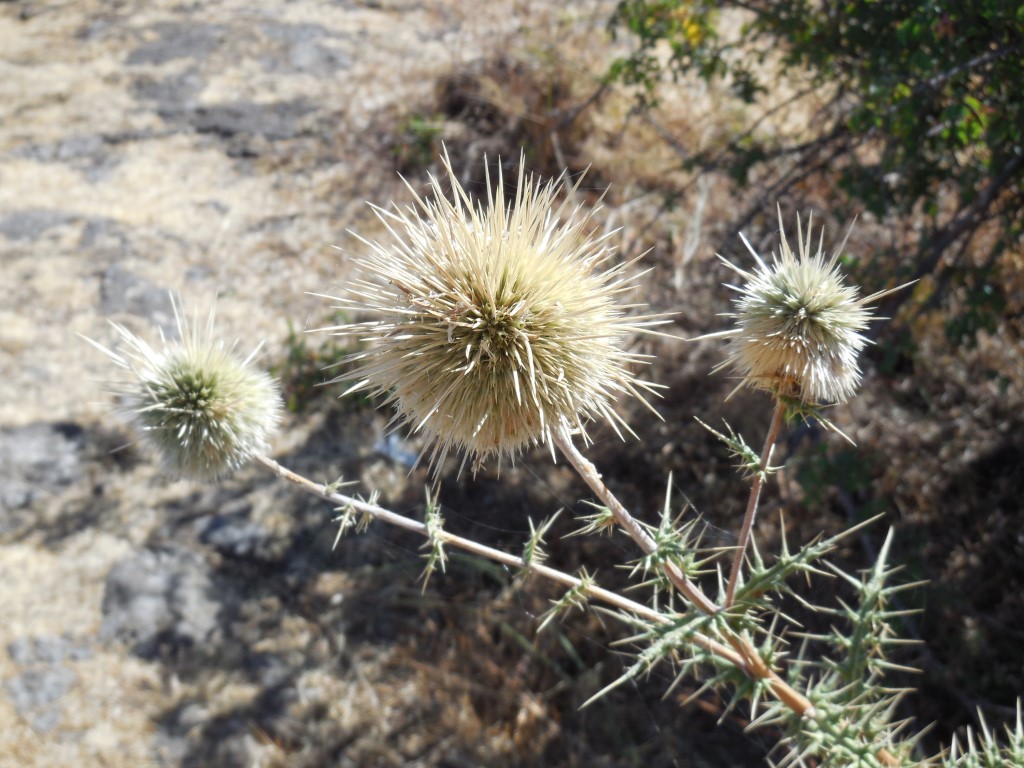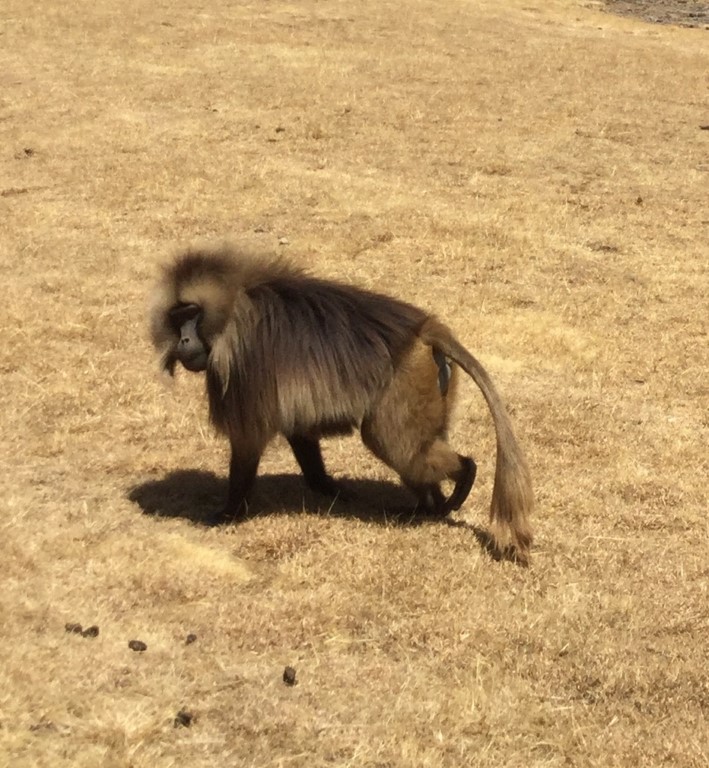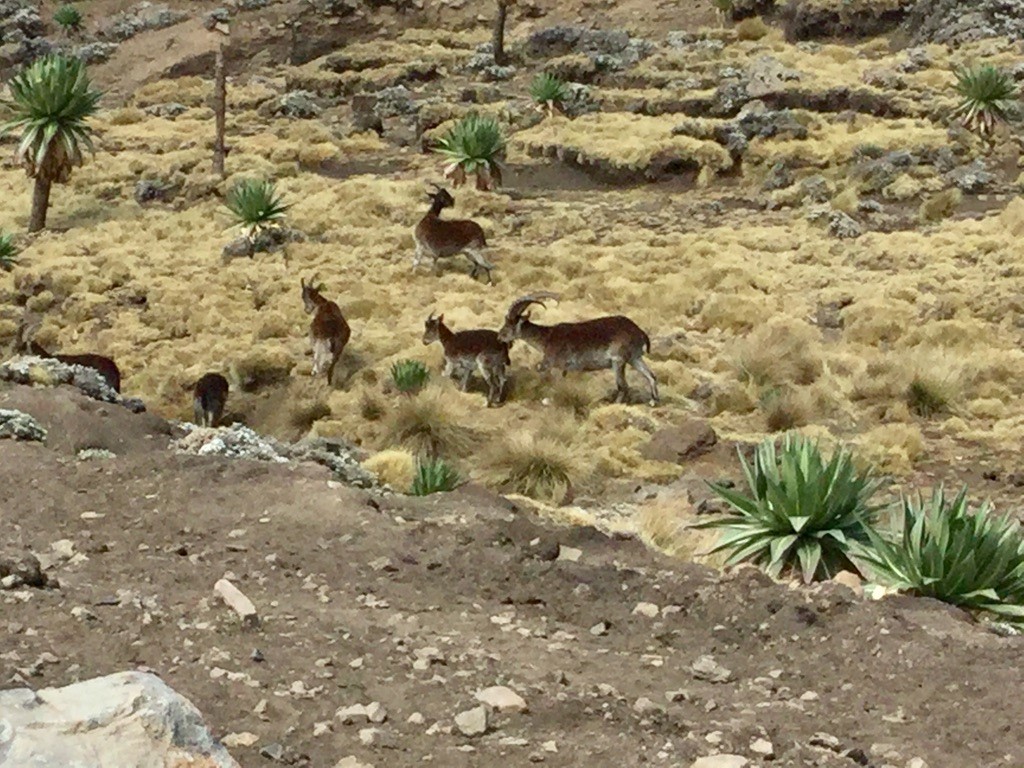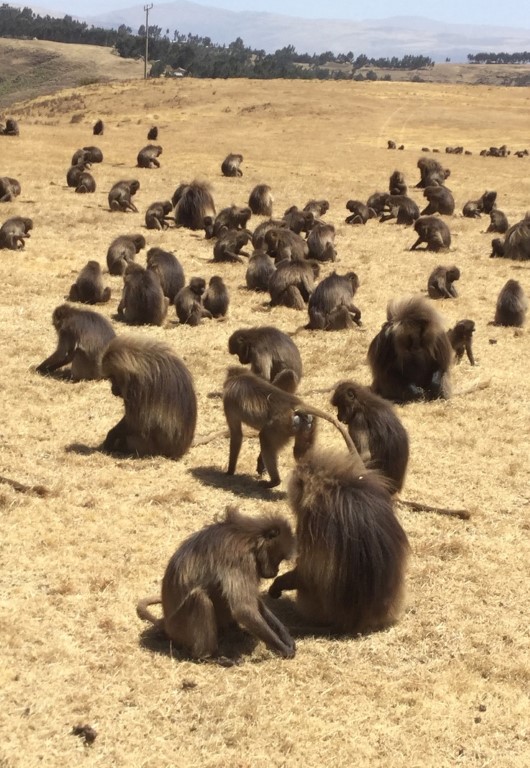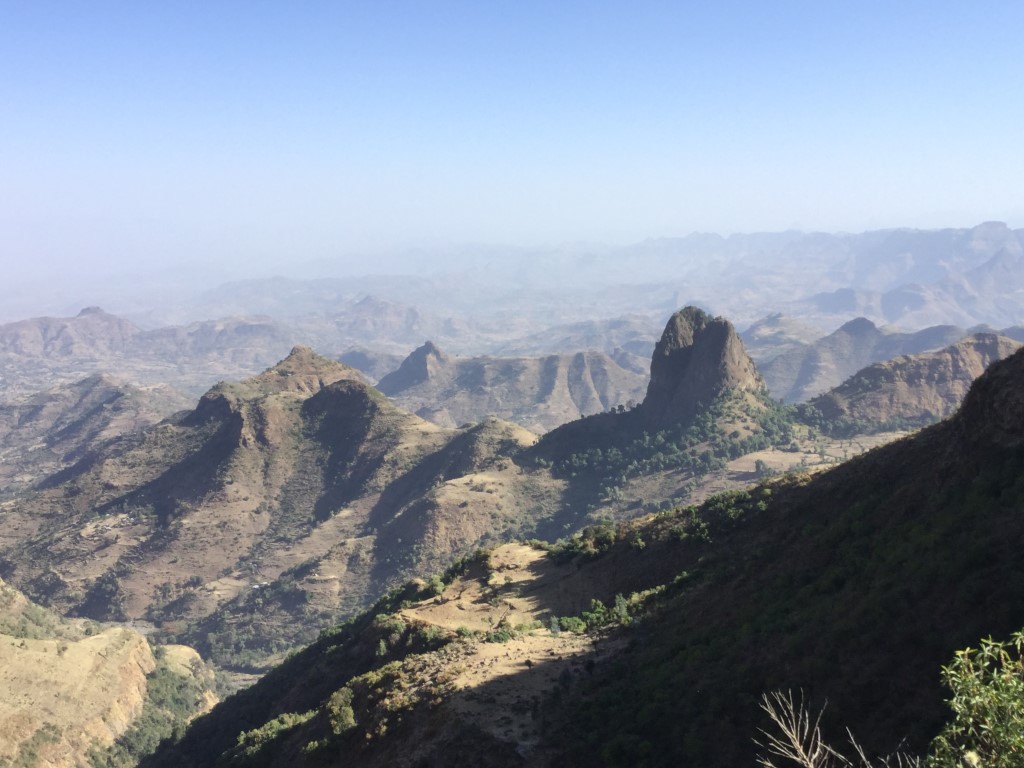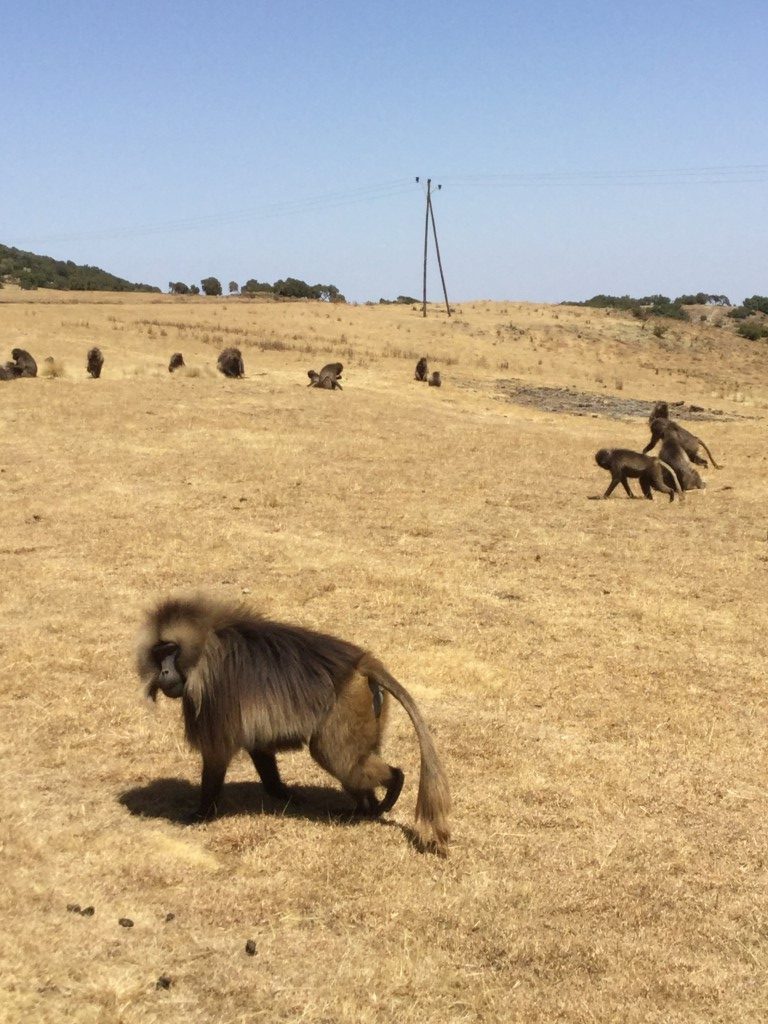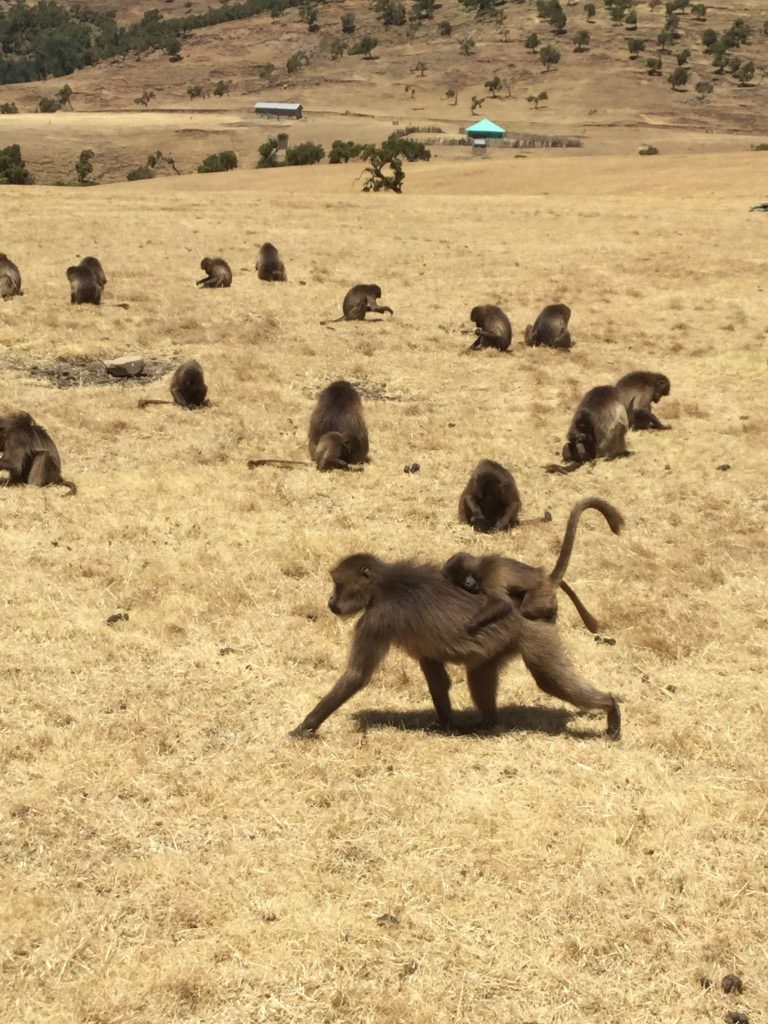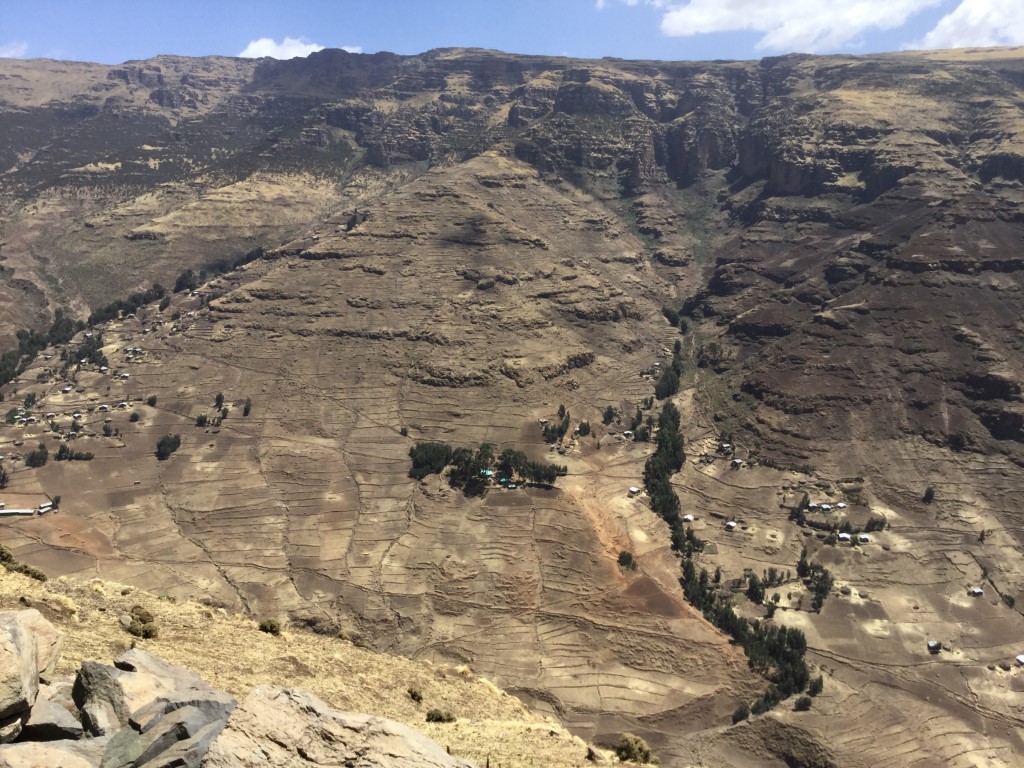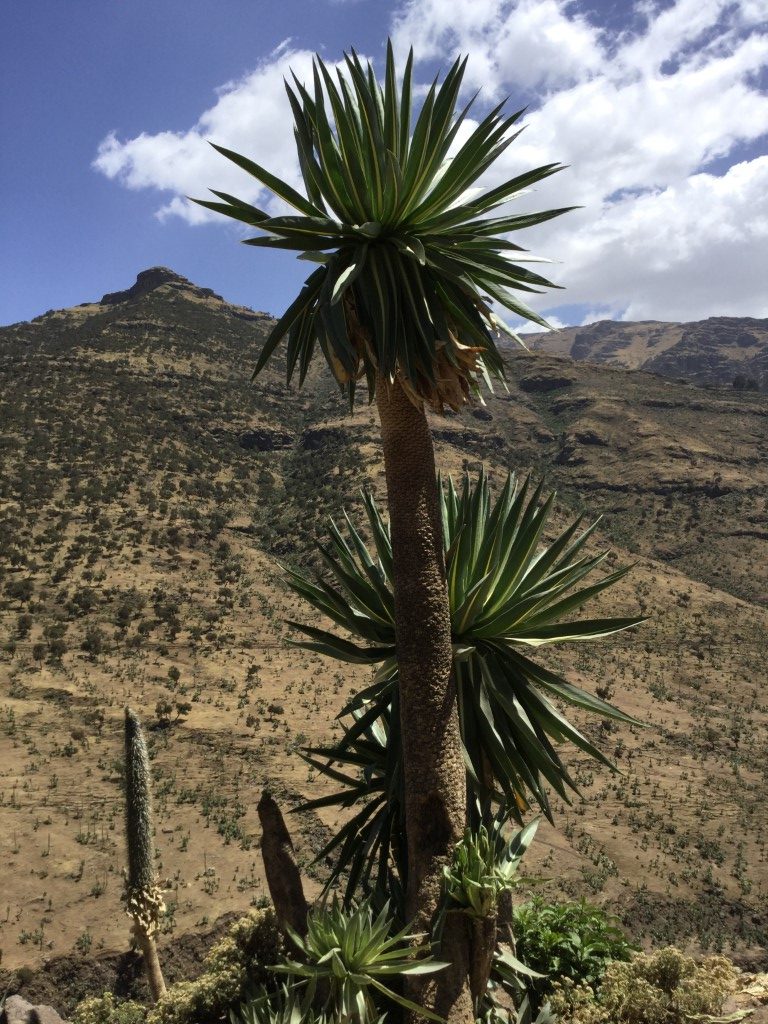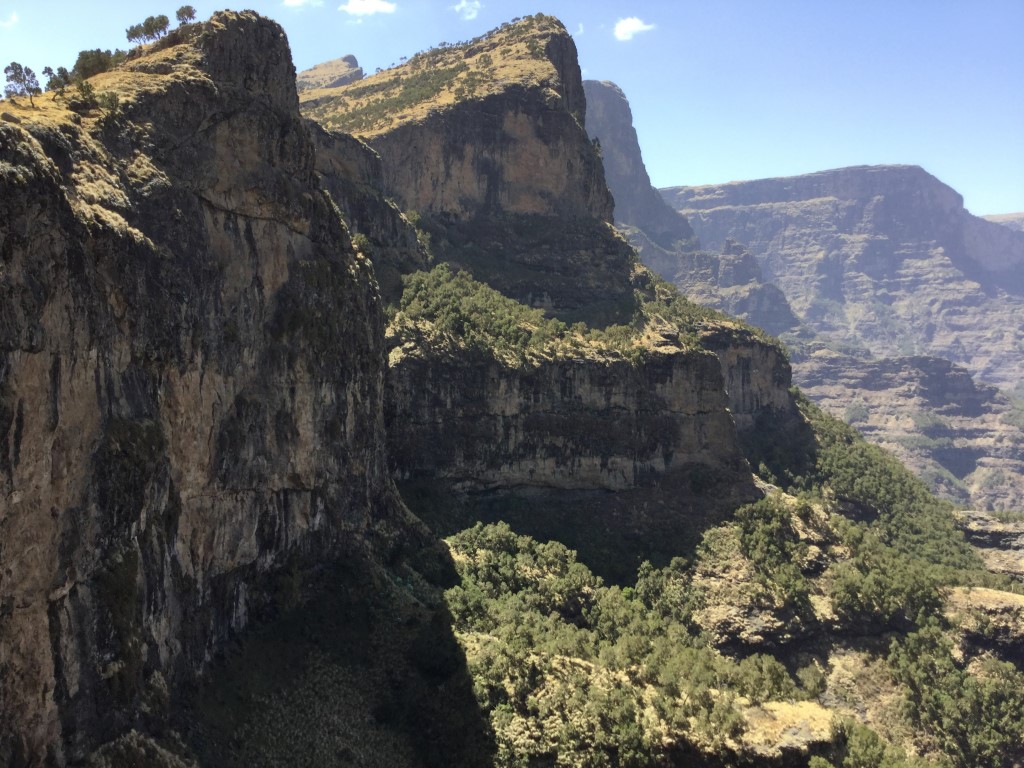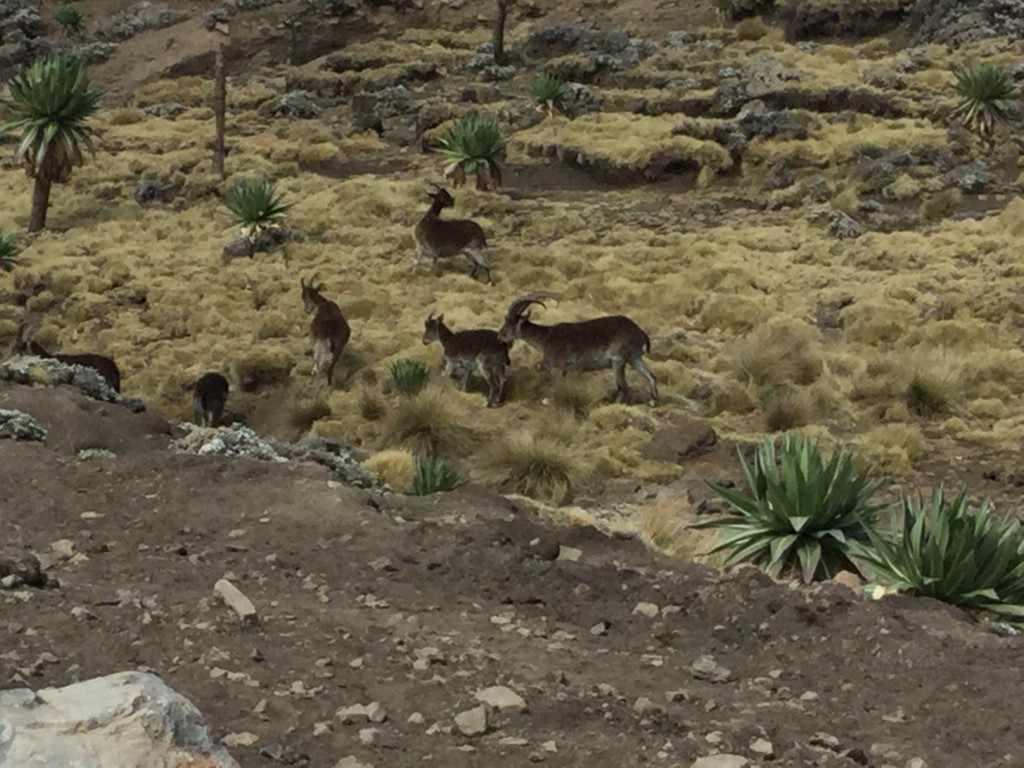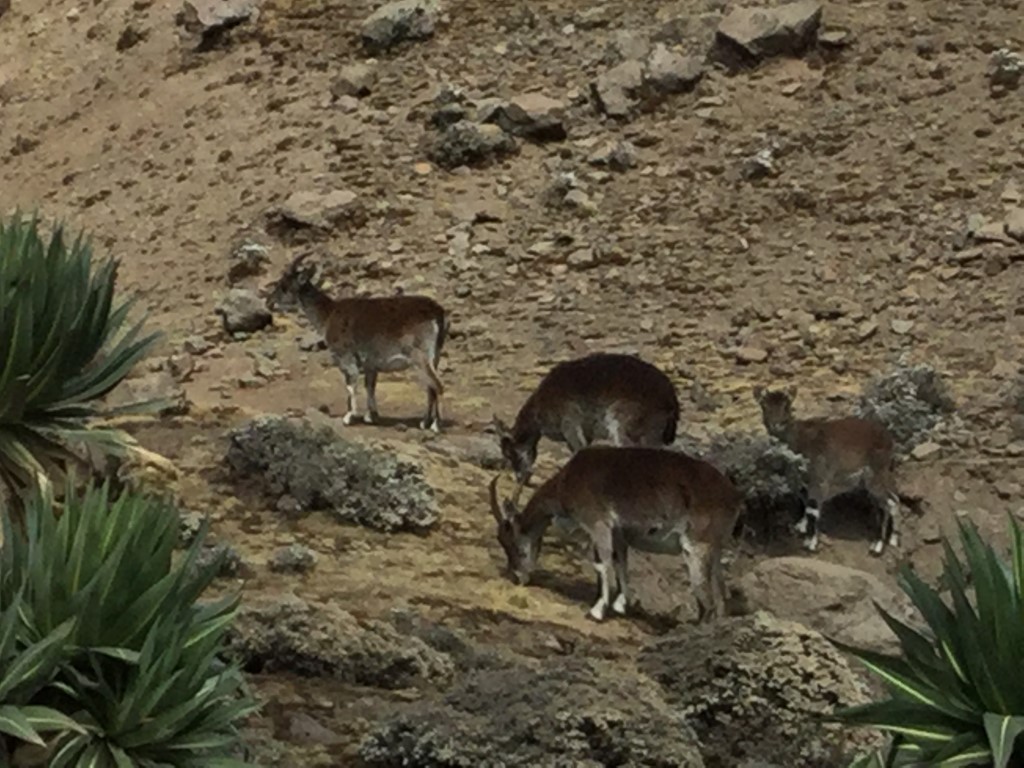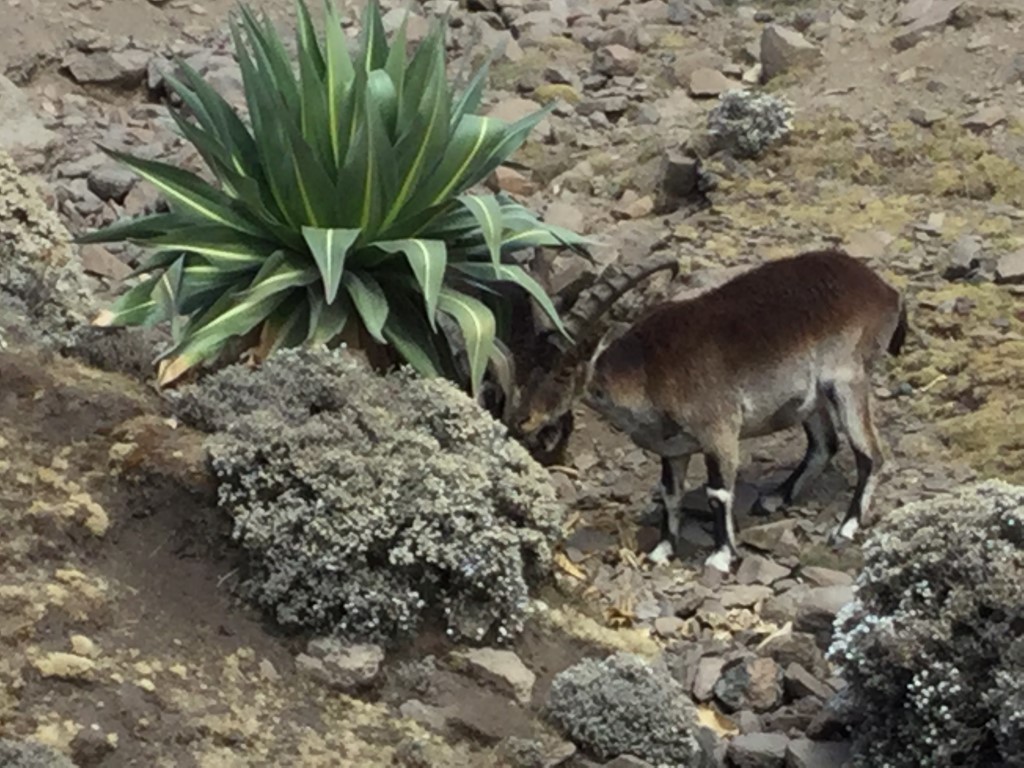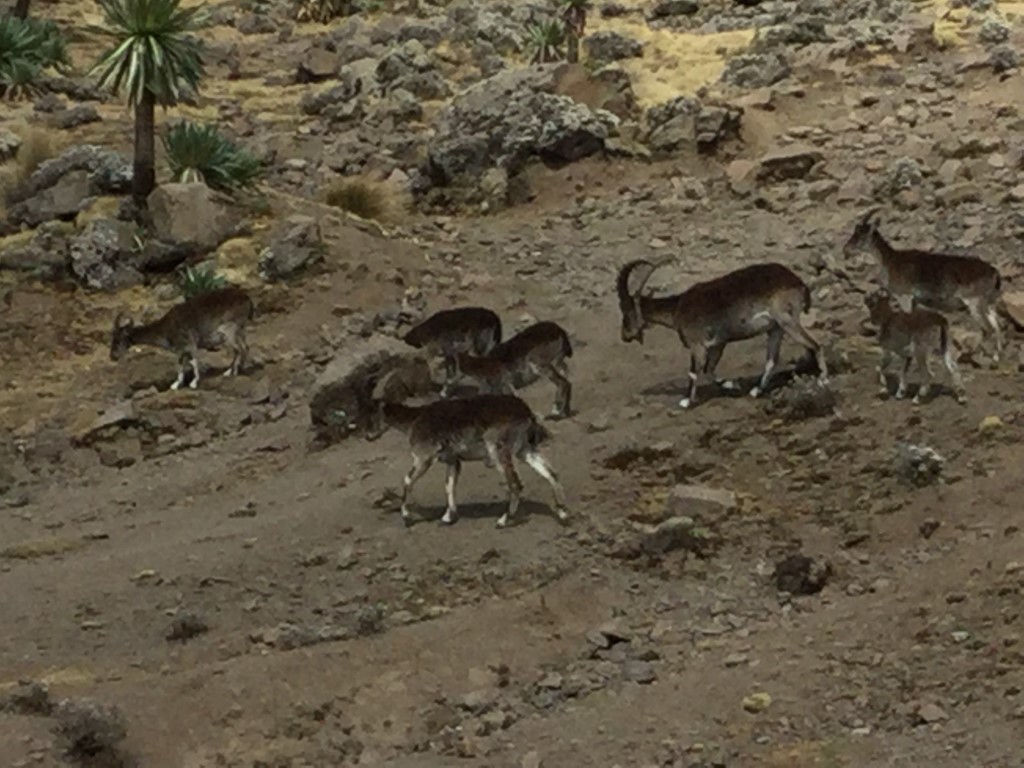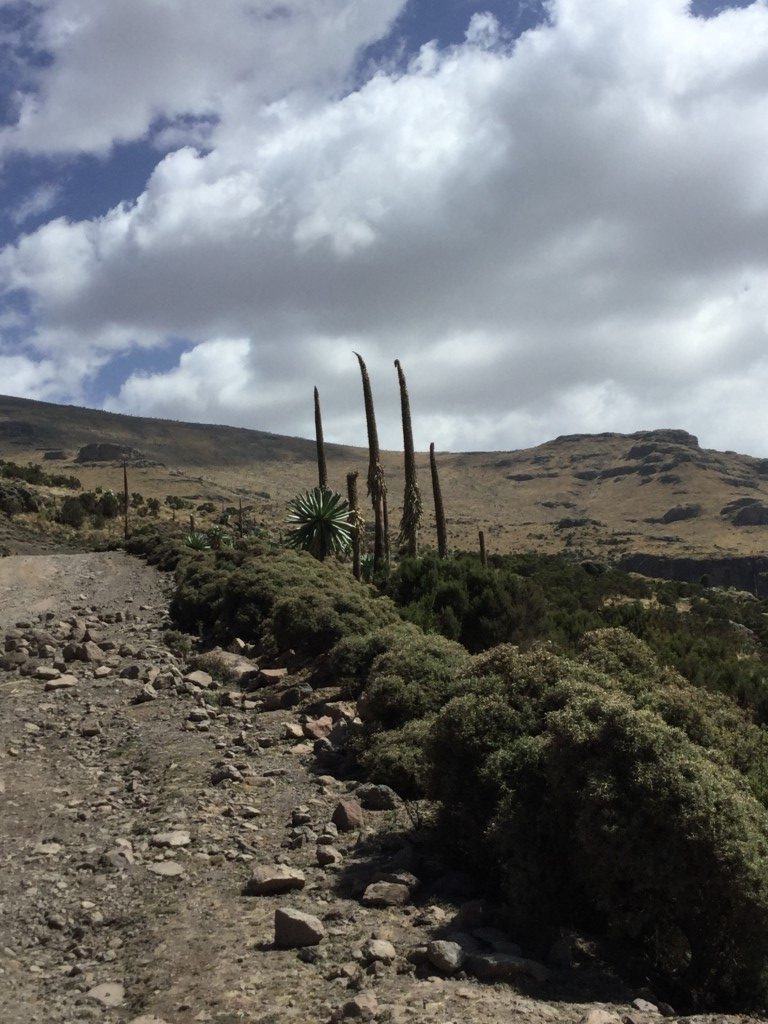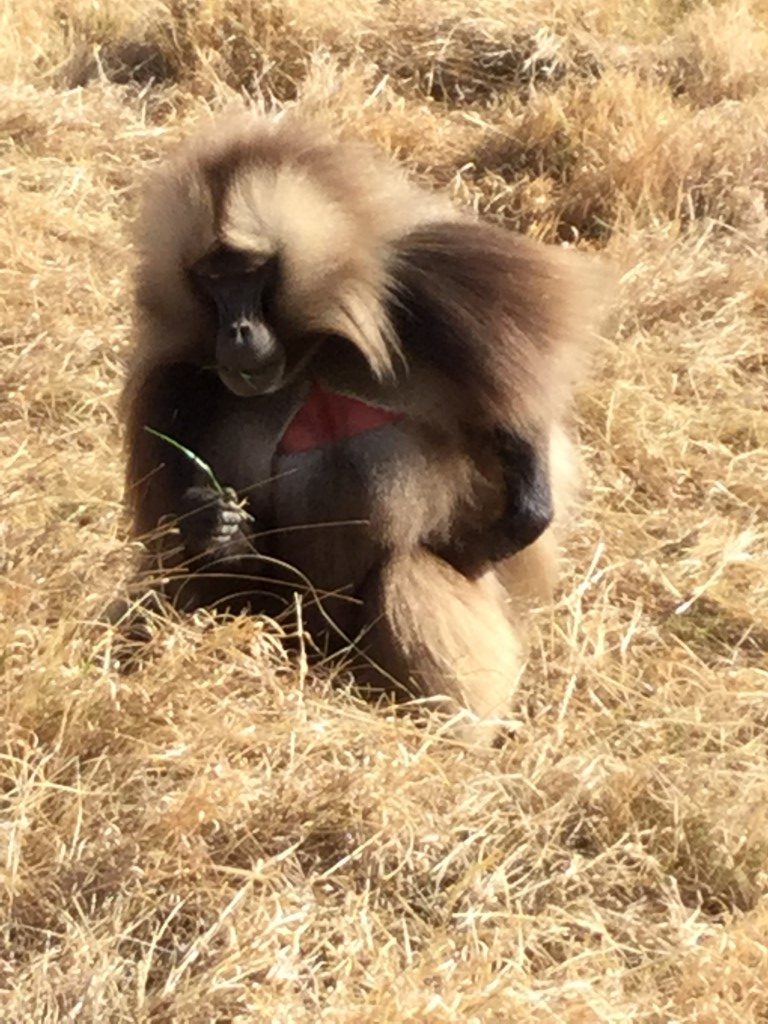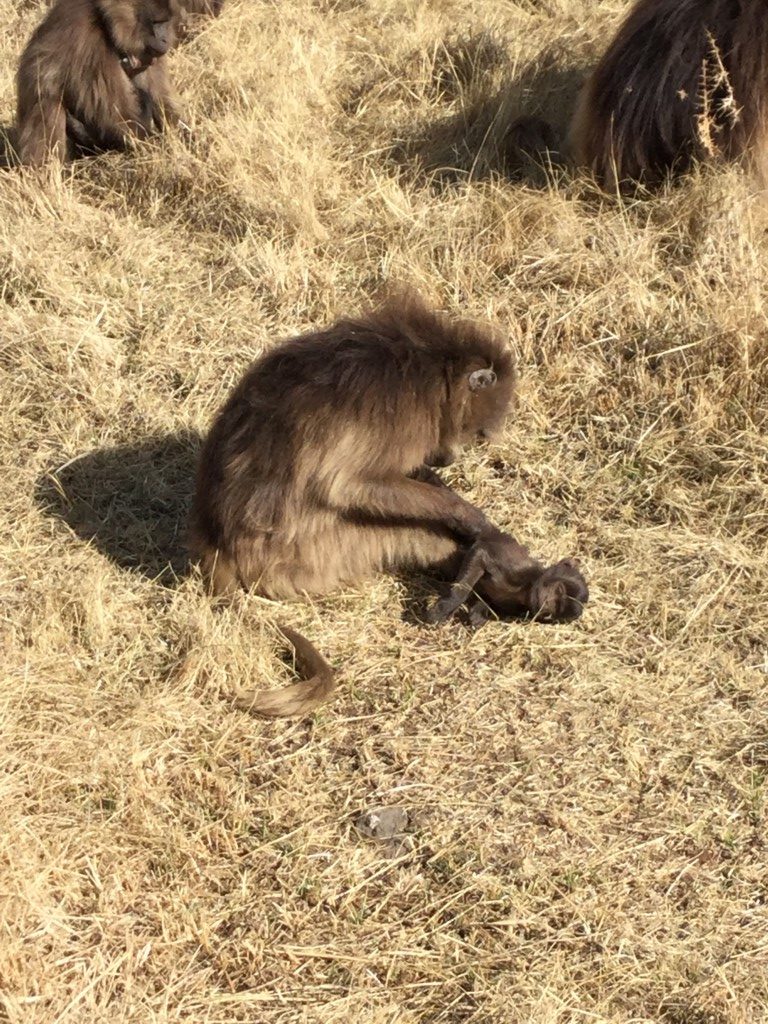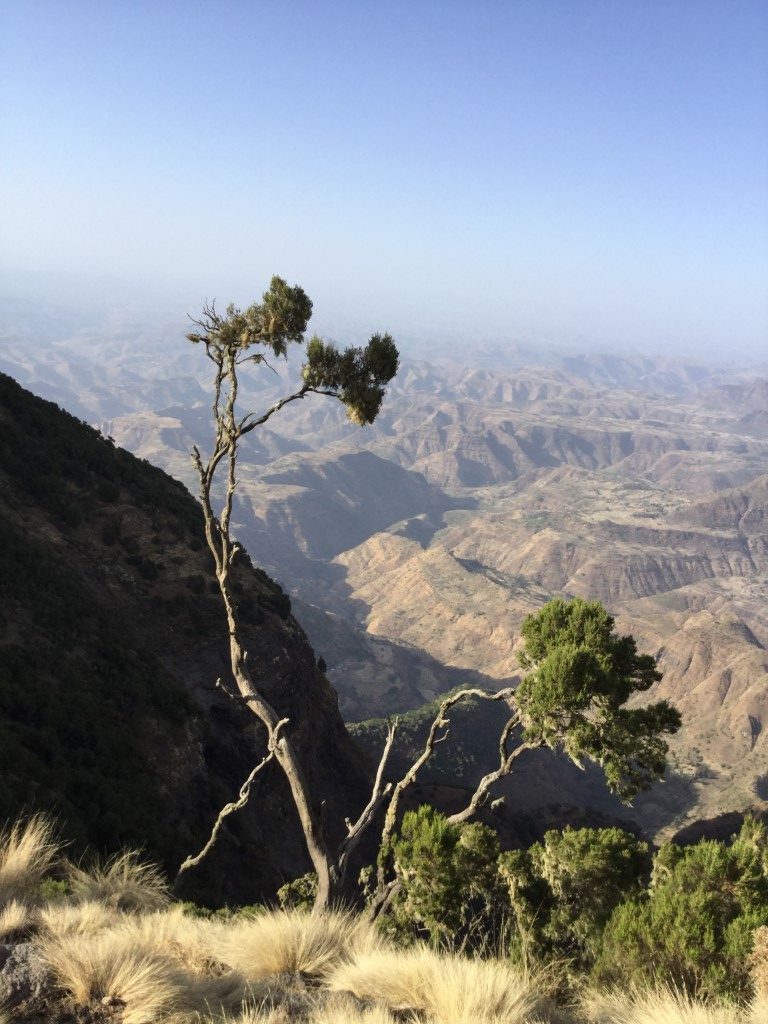Simien Mountains
The Semien Mountains in northern Ethiopia, north east of Gondar, are part of the Ethiopian Highlands. They are a World Heritage Site and include the Simien Mountains National Park. The tallest peak is Ras Dashen (4,550 m); other notable heights include Mounts Biuat (4,437 m) and Kidis Yared (4,453 m).
Because of their geological origins, the mountains are almost unique, with only South Africa’s Drakensberg having been formed in the same manner. Specific animals in the mountains include the walia ibex, gelada monkeys and caracal. Prior to the creation of the Rift Valley, Semien Mountains were formed by lava outpourings from a volcano between 40 and 25 million years ago during the Oligocene period. The lava is believed to have spread over more than 5000 m2 and resulted in basaltic deposits some 3,000-3,500 m thick which covered the preexisting Precambrian crystalline basement. The major part of the Semien Mountains consists of remnants of a Hawaiian-type shield volcano*. The Kidus Yared peak is situated near the center of the old shield volcano. Ras Dejen (4,533 m), Bwahit (4,430 m) and Silki (4,420 m) were formed from the outer core of this ancient volcano.
The extreme escarpment in Semien appears to be a precondition for the formation of the extended uplift of the whole mountain massif 75 million years ago. The dramatic views are due to this volcanic activity. Especially noteworthy is the 2,000 m high escarpment extending in a southwest-northeast direction.
*(A Hawaiian eruption is a type of volcanic eruption where lava flows from the vent in a relatively gentle, low level eruption; it is so named because it is characteristic of Hawaiian volcanoes).

